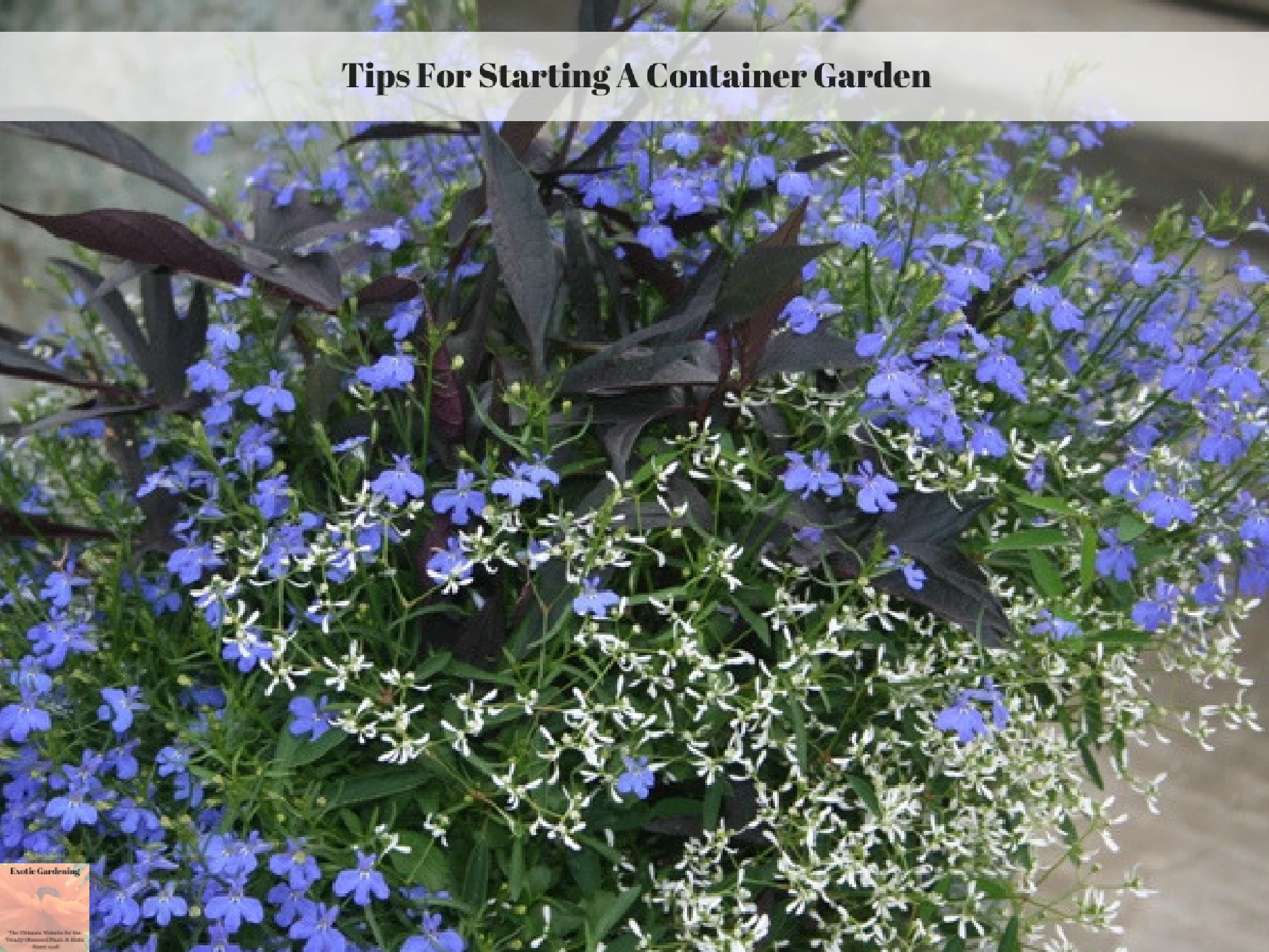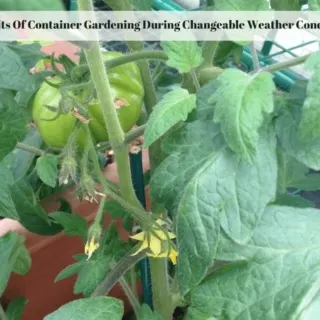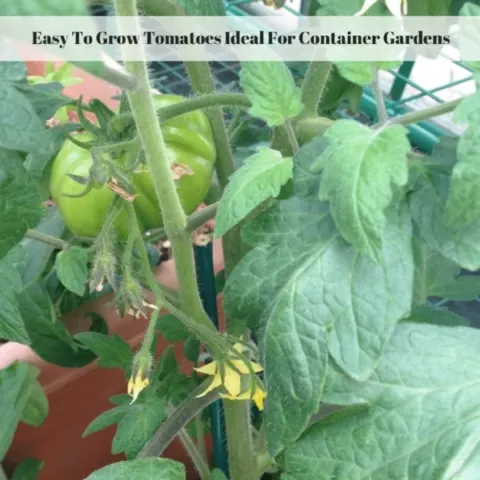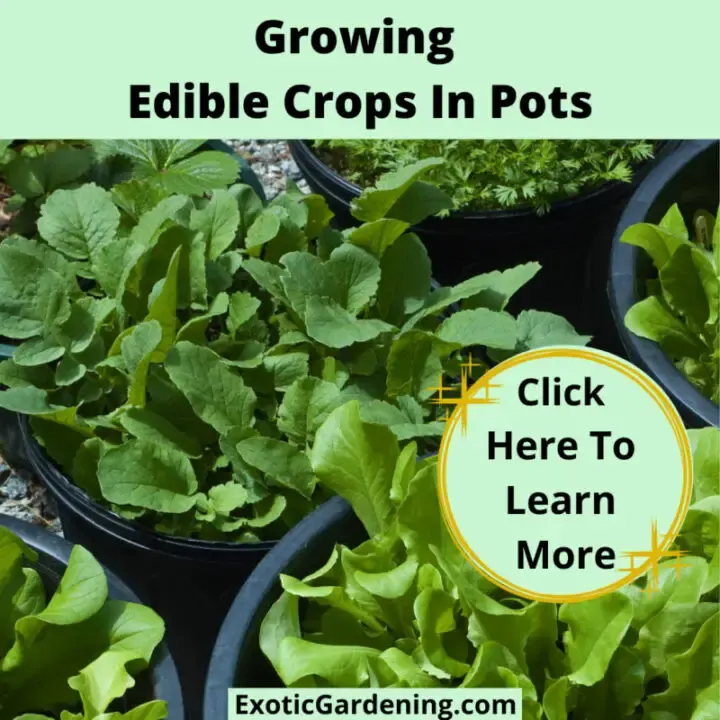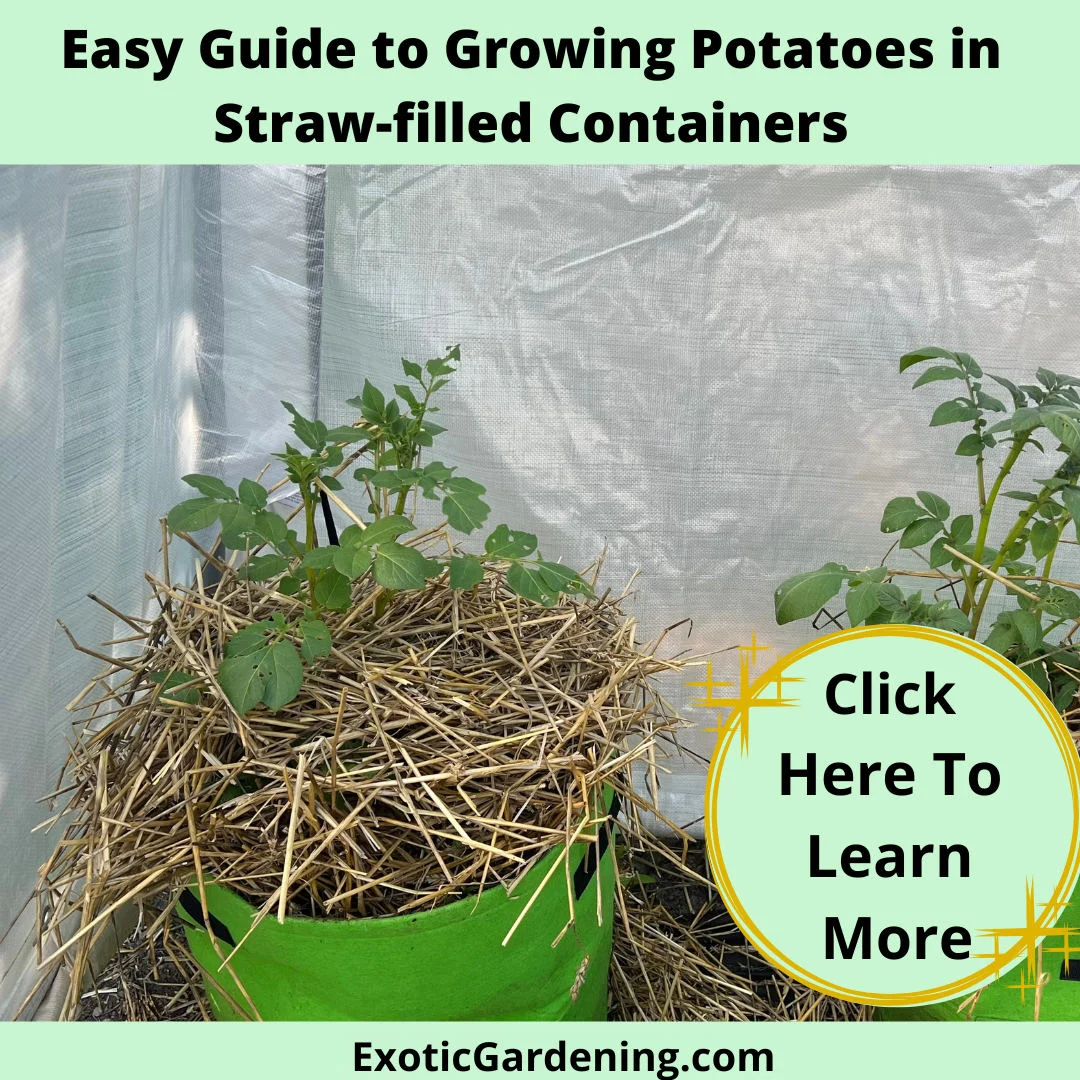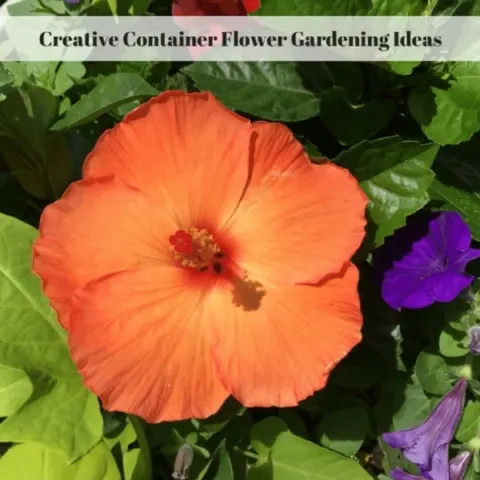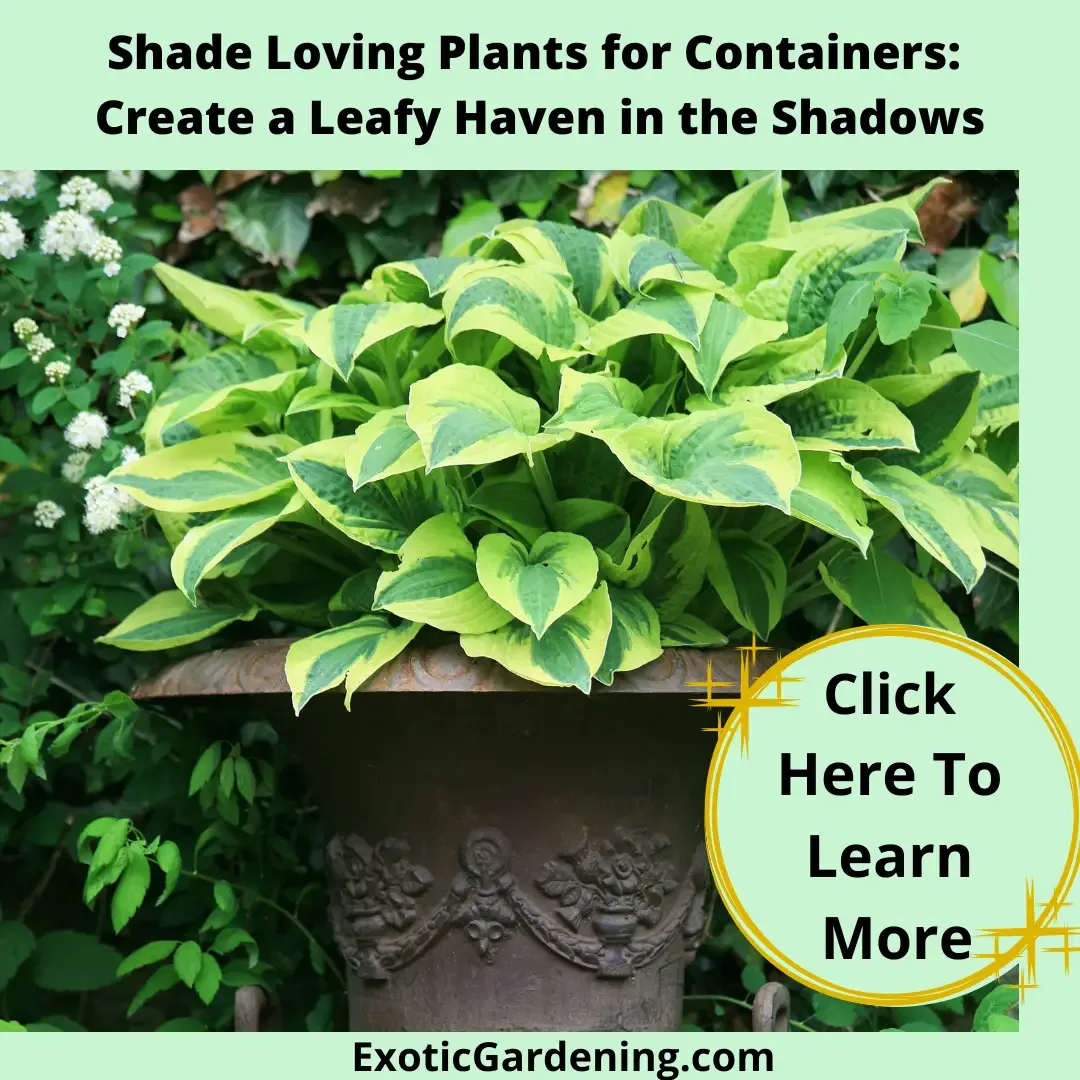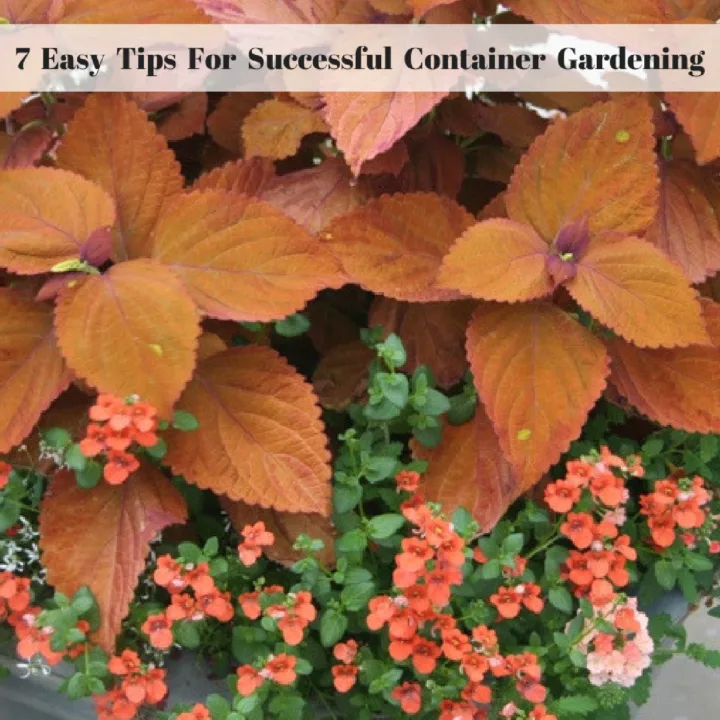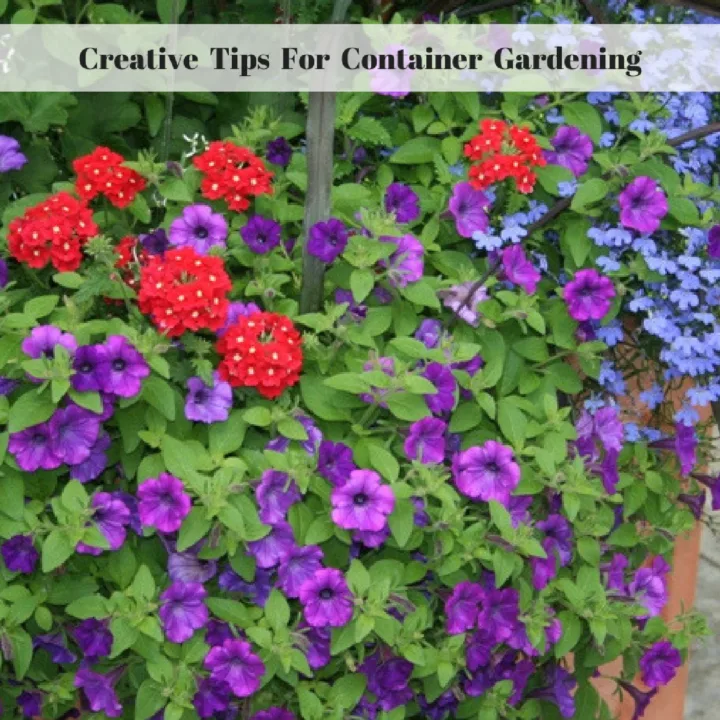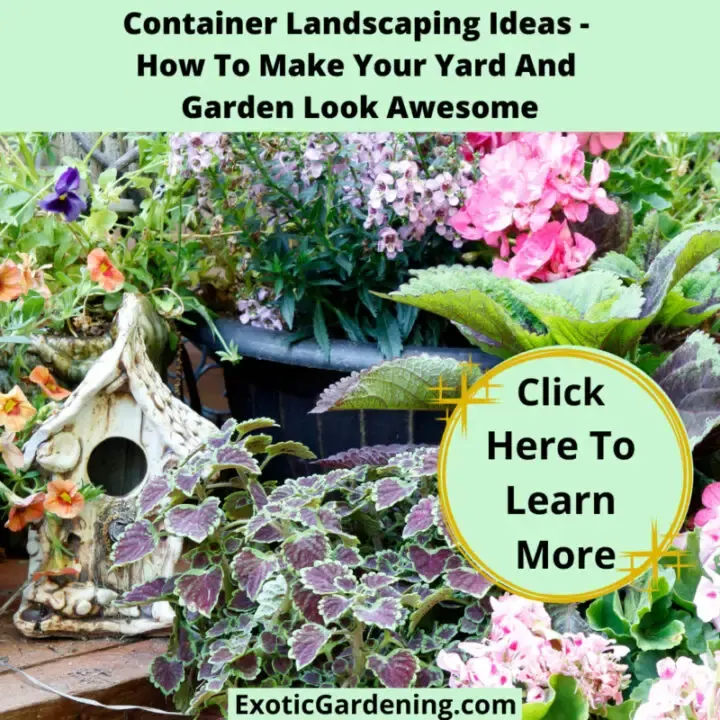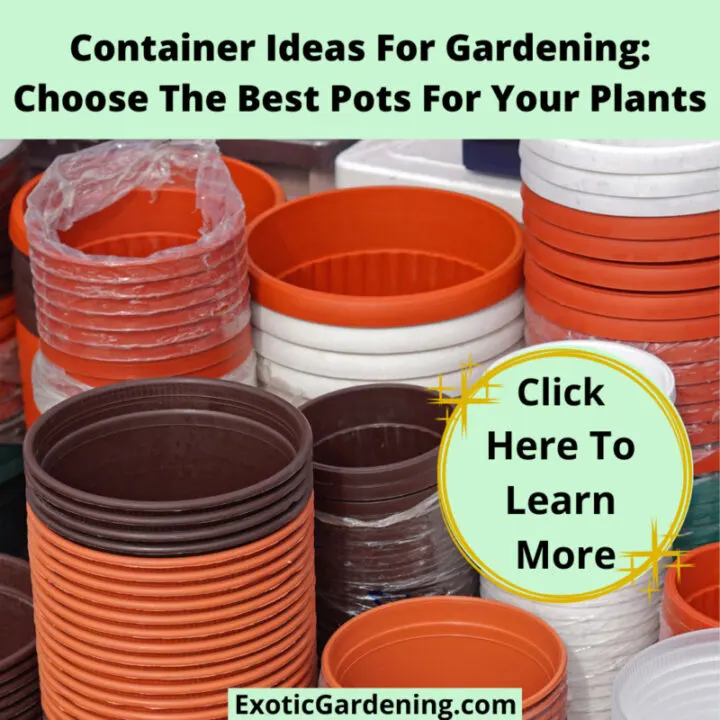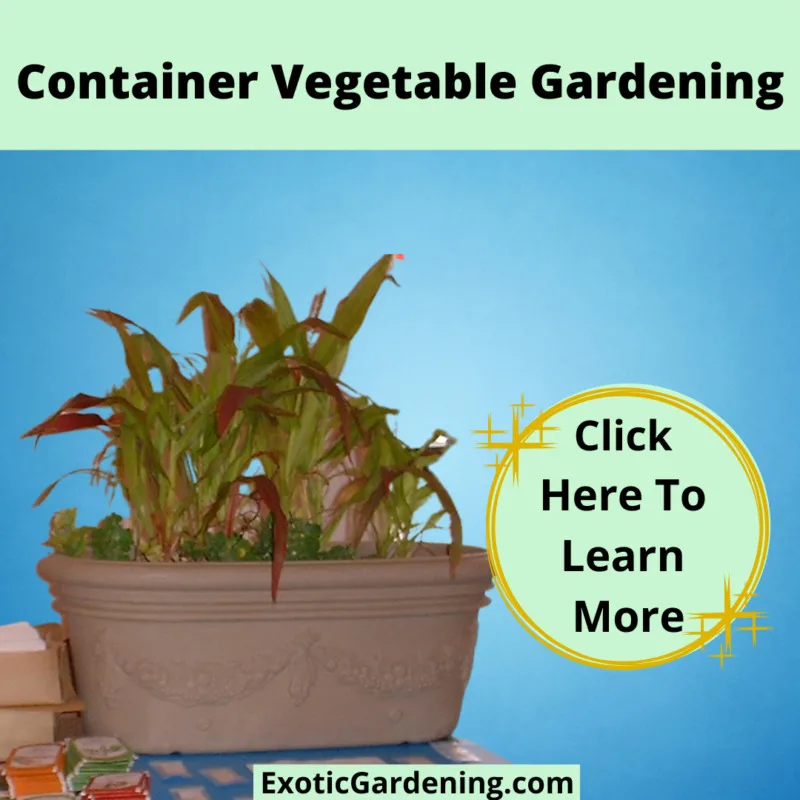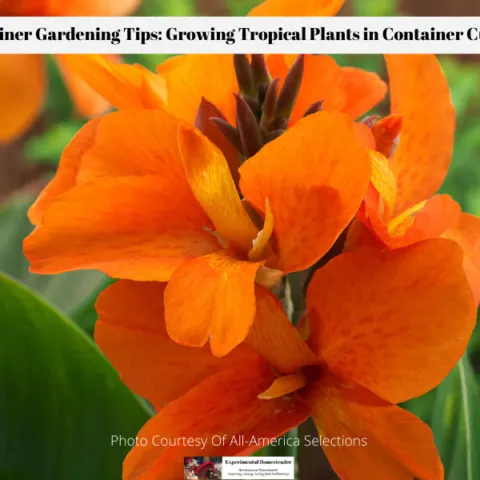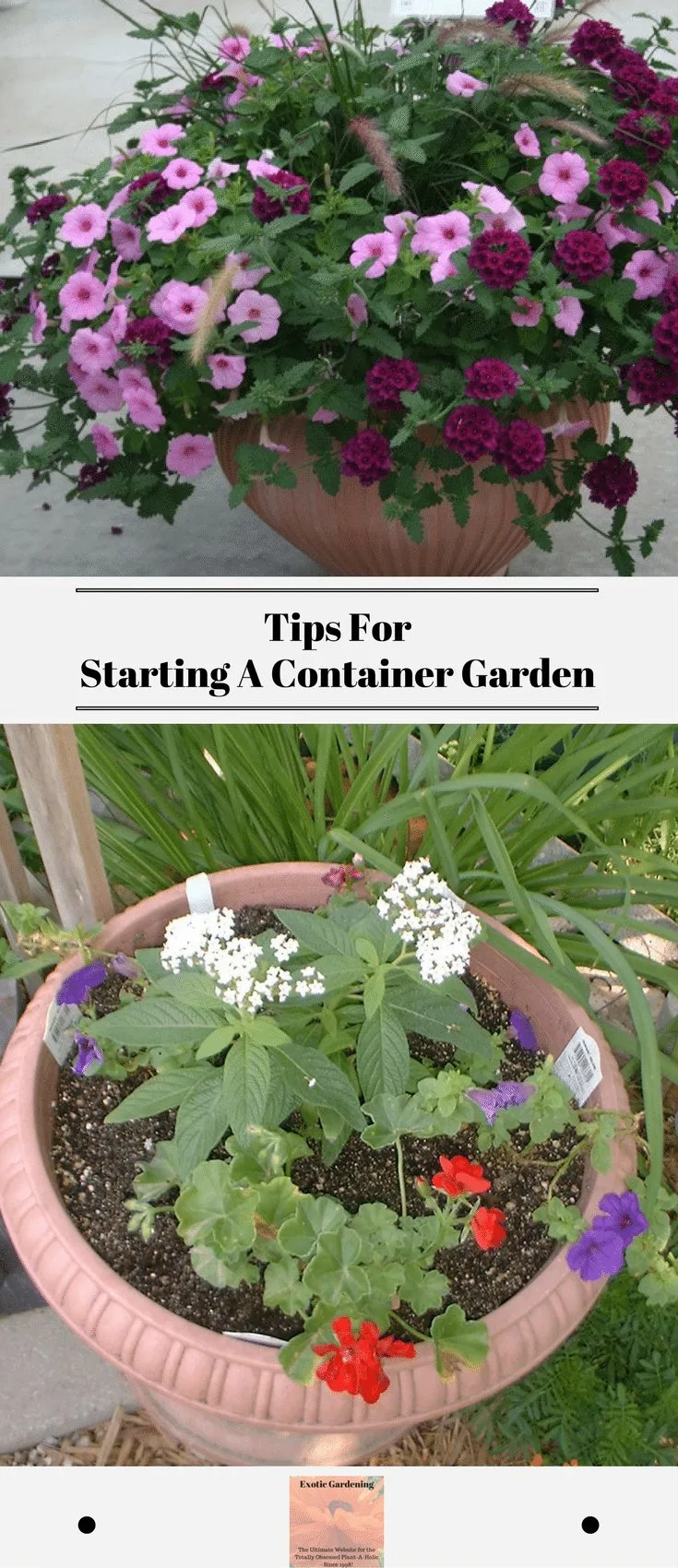Once you decide to plant a container garden, the first step is choosing if those plants are going to be grown indoors or outdoors. Or you can take advantage of the opportunity to move the containers inside during the cold weather and outside when it warms up.
A lot of people think container gardening is only for indoor growing and patios, but containers are useful for many garden situations. Here are some tips for starting a container garden.
There are also links to products I recommend from companies I have a referral relationship with. I will be compensated if you make a purchase after clicking on my links.
Container Gardens Are Movable
- If you plant your garden in containers and you need to move it later, it’s easy to do it. This is not the case with a traditional garden! Container gardens are ideal for people who live in apartments, rent or move frequently because you then have the option to take your plants with you.
- If you’re expecting bad weather, temporarily move the containers to a safer location, like indoors or into a garage or basement. But there isn’t much you can do for a traditional garden but hope the plants survive without a lot of damage.
- Sometimes the spot we pick to grow a garden in is too sunny or too shady. With a traditional garden it is possible with a bit of work to construct shelters that shade plants or dig the plants and move them to a better location, but that is a lot of extra work. With a container garden it is much easier to move the potted plants to a better location.
- Another advantage of container gardens is they are accessible because you can put them in places where an in-ground garden won't work. They also sit higher up so you can sit on a chair to tend your plants instead of squatting on the ground or bending over to reach the ground. Be sure to place your containers in an area that is easy for you to get to and also easy for you to get water to. It’s easy to lose motivation to work on your garden if it’s several hundred yards away from the house or if there is not an easy way to water your plants!
- Be sure to locate your plants as far away from streets as you can. Pollution from cars, as well as the dust they kick up, can damage your plants and contaminate them. You don’t want to eat all that pollution and sometimes washing the plants off is not enough, so locate plants as far away from the road as possible.
Containers Are Perfect For Indoor Gardening
- Choose a good spot for an indoor garden that is not prone to drafts and is not too dark. An area directly in front of a south facing window is ideal as long as that window is not drafty during the winter months.
- Most plants prefer warm conditions for optimal growth, however they do not like being placed in close to a heater or heat vent. Plant leaves are prone to drying out when they are too close to a heat source.
- During the summer months, keep plants away from air conditioners. Fans usually do not bother plants since they are moving air that is room temperature. For homes that are kept on the cooler side, it is best to move the plants to a different room and close off the vents or move the plants outdoors.
- Plants thrive best with natural light. If you don’t have a room that gets a lot of natural sunlight, use LED grow lights for your plants. It is best to use lights that are specially designed for growing plants because they contain a broad spectrum of light, which is closer to natural light than standard bulbs.
- You can use fluorescent lights as long as you choose both a "hot" and a "cool" bulb. Most fluorescent light packages have red, orange or yellow on the "hot" spectrum bulbs with blues or greens on the "cool" spectrum bulbs. Fluorescent lights do not - in my experience - perform as well as LED grow lights, but they a cheaper option that does work.
- Another consideration is the amount of humidity in the room. It is best to adjust the humidity in the room to meet the needs of the plants.
- Some plants thrive better in higher humidity, and others do well in lower humidity. You may need to invest in special equipment or at the very least, a humidifier, to adjust the humidity if you’re raising very delicate or picky plants. You probably won’t have to do this unless you’re growing exotic varieties.
Choosing The Right Plants For Container Gardens
Next, you need to choose which plants you want to grow. Containers are great for growing almost any type of plant, because they offer great versatility.
Be careful however! It is so easy to plant far too many varieties, and end up frustrated. Don’t grow anything when you are first starting out that you can easily pick up cheaply at the grocery store or that needs a lot of care!
- Stick to growing fruits and vegetables that you really enjoy and have a hard time locating locally, or those you find too expensive or too of a low quality.
- Tomatoes are a favorite for home gardeners, because their quality in stores if often very poor plus you have the option to grow them organically at home. While full size tomatoes do fine in containers such as 5-gallon buckets, there are smaller tomato varieties that do great in window boxes or hanging baskets.
- Strawberries are super easy to grow as well. Choose an ever bearing variety instead of a June bearing variety for maximum fruit production.
- There are many tropical fruit plants - such as bananas, lemons, limes or oranges - that work great in containers. Choose smaller varieties of the plants that are bred specifically for this purpose.
- Of course, there are many ornamental flowers and foliage plants that do great in containers for those that simply want pretty instead of practical. Geraniums and begonias are two such plants that come to mind. As long as they get proper light they bloom year-round.
Final Thoughts
- Remember to start with three to five plants and keep it simple. Use individual pots for each plant for best results especially if you are a beginning gardener. The exception to the rule is that it is ok to combine more than one plant in a single pot as long as they take the same amount of sunlight, water, fertilization and basic care.
- Be sure to use a good quality potting soil in your containers. They do have special blends of potting soil made just for container gardening and I suggest choosing one of those.
- When it comes to watering container gardens, they often require daily watering in the heat of summer, but less frequent watering when grown indoors. Stick your finger in the soil and if it feels dry, water. It is best to dump any excess water sitting in saucers under your containers after 30 minutes. At this point, the soil in the container has already taken up all the water it is going to.
Enjoy learning to grow plants in containers and don't stress too much!
Questions? Leave them in the comments below!
Container Gardening
Benefits Of Container Gardening During Changeable Weather Conditions
Changeable weather conditions certainly impacts gardeners who wish to grow their plants in the ground, but there is a solution. Learn about the benefits of container gardening and how it can help gardeners deal with climate change!
Easy To Grow Tomatoes Ideal For Container Gardens
Ever wonder how to grow tomatoes in pots outside? Start with these easy to grow tomatoes that perform well when grown in containers indoors or out!
Growing Edible Crops In Pots
Have you considered growing edible crops in pots? From dwarf fruit tree to herbs and even vegetables it is fun and easy to do.
Easy Guide to Growing Potatoes in Straw-filled Containers
Unearth the secrets of successful container gardening with our in-depth guide to growing potatoes in straw for a bountiful harvest.
Creative Container Flower Gardening Ideas
Learn what is necessary to take your creative container flower gardening visions from an idea to an actual container garden with that wow factor!
Shade Loving Plants for Containers: Create a Leafy Haven in the Shadows
Explore the allure of shade-loving plants like hosta, bleeding hearts, and hellebores in containers under a serene shade tree canopy.
7 Easy Tips for Successful Container Gardening
Show your passion for successful container gardening by excelling at it. These 7 container gardening tips are sure to increase your success.
Creative Tips for Container Gardening
Think outside the box with these container design ideas. Create creative containers filled with flowers, herbs or vegetables.
Container Landscaping Ideas
Even if you can't plant in the ground, learn how to make your yard or garden look awesome with these container landscaping ideas.
Container Ideas For Gardening: Choose The Best Pots For Your Plants
When it comes to container ideas for gardening there are many choices from wooden pots to things you have laying around your house.
Container Vegetable Gardening
Container vegetable gardening is ideal for people who rent or for people who have limited mobility but want to grow their own vegetables.
Container Gardening Tips: Growing Bulbs and Tropical Plants in Container Culture
Growing tropical plants in container culture can be challenging but once you figure out how to get them to thrive, it is very rewarding.
Use the buttons on the right hand side of the screen to share this article with friends or family who might find it useful. Pin the picture below to your pinboard on Pinterest for future reference.

